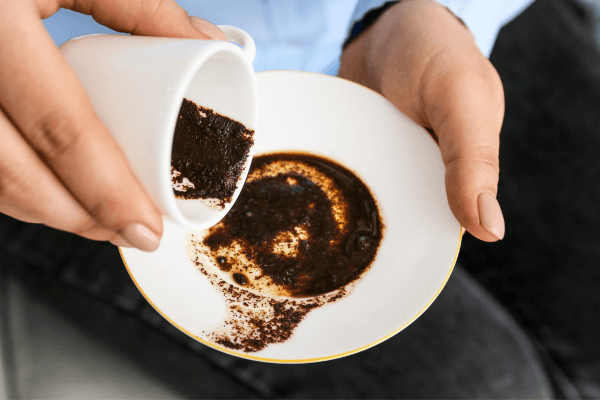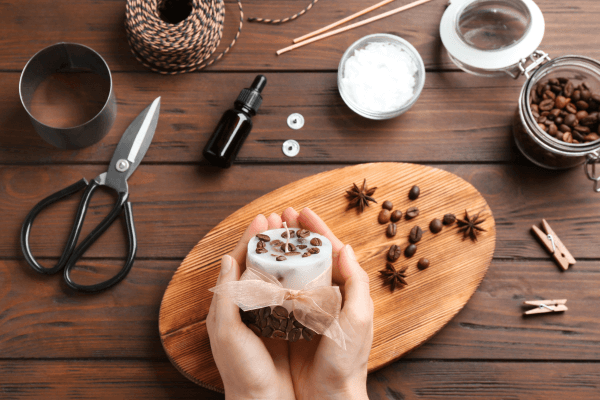The Aromas of Coffee
The Aromas of Coffee transcend mere fragrance, intertwining with our senses to create a symphony of sensory delight. Within the realm of coffee hospitality, aroma is not just an accessory but a maestro orchestrating the symphony of flavors that dance upon our palates. It serves as a herald, foretelling the richness and depth of the coffee experience that awaits. In this odyssey of olfaction, we embark on a sensory journey that transcends the ordinary, venturing into the depths of aroma to unravel the intricacies that define the very essence of coffee.
From the moment freshly ground beans meet hot water, a transformative alchemy begins. The earthy notes of the beans, redolent of their origins, mingle with the steam, releasing a heady bouquet that tantalizes the senses. Each aroma tells a story – of distant lands, meticulous craftsmanship, and the labor of love that goes into every cup. As the brew steeps, the aromas evolve, revealing new layers of complexity and depth. The delicate floral notes of a well-brewed cup, the subtle hints of fruit or spice, all come together in a harmonious symphony that elevates the coffee experience from a mere beverage to a multisensory journey of discovery and delight.
Join us as we delve into the transformative power of scent, exploring how it shapes our perception and appreciation of coffee. Through the art of smell training and sensory tasting, we unlock the secrets hidden within each aroma, enhancing our ability to discern and appreciate the nuances of flavor. From the first inhale to the last lingering scent, let us immerse ourselves in the fragrant tapestry of coffee aromas, enriching our understanding and deepening our connection to this cherished beverage.
The Aromas of Coffee: The role of smell in the perception of aromas
Smell is one of the most powerful senses of human beings, being able to identify and distinguish a wide variety of aromas. Within the olfactory system, there are millions of odor receptors located in the upper part of the nasal cavity, which are responsible for detecting volatile emissions present in the air.
When we inhale the aroma of coffee, these messages interact with the olfactory receptors, sending signals to the brain that are interpreted as different aromas. It is this interpretation that allows us to identify and appreciate the characteristic aromas of coffee, such as fruity, floral, chocolate, spice and many other notes.
The Aromas of Coffee: Coffee Aromas and Flavor Profiles
Aromas play a crucial role in the perception of coffee flavors. In fact, scientific studies have appreciated that our sense of smell has a significant influence on how we experience the taste of food and drinks. In the case of coffee, aromas can affect our perception of acidity, sweetness, bitterness and body.
For example, a coffee with fruity notes can evoke a sense of sweetness, even if the coffee itself has no sugar. Likewise, chocolate aromas can contribute to the perception of a fuller, more indulgent taste.
Coffee flavor profiles are built from a complex combination of basic flavors such as sweetness, acidity, bitterness and aftertaste. Flavorings play an important role in creating these profiles, adding levels of complexity and nuance to the drink.
The Aromas of Coffee: The Influence of Roasting on Coffee Aromas
The roasting of coffee beans is an essential process that influences both the flavors and aromas of the final beverage. During roasting, a series of chemical reactions take place that transform the compounds present in raw coffee beans into complex and rich aromas.
The intensity of roasting directly affects coffee aromas. Lighter roasts tend to preserve the original aromas of the beans, highlighting their specific characteristics. On the other hand, darker roasts can bring out toasted, caramel and dark chocolate aromas.
It is important to note that each origin of coffee has unique aromatic characteristics, which may vary according to the country, region, altitude and even the soil in which the beans are grown. This diversity of aromas adds an intriguing dimension to the coffee experience, allowing connoisseurs to explore a wide range of aromatic profiles.
The Aromas of Coffee: The Importance of Sensory Tasting
The sensorial tasting of coffee, also known as cupping, is a practice used by experts to evaluate and appreciate the aromas, flavors and other characteristics of the beverage. In this process, different coffees are prepared and evaluated side by side, allowing a comparative analysis of their aromatic and taste profiles.
During tasting, aromas are evaluated both in the dry aroma of ground coffee and in the aroma after adding hot water. Tasters inhale deeply, identifying and describing the different aromas present in each cup.
This practice is fundamental for producers and roasters, as it allows the identification of defects or unwanted characteristics in coffee. In addition, sensory appreciation is a way to improve taste and understanding of different coffee flavor and aroma profiles.
Exploring the Aromas of Coffee: Hints and Tips
If you want to enhance your fragrance of coffee aromas, here are some helpful tips:
Use a cup or glass with a suitable shape, allowing the concentration of aromas.
Inhale the coffee aroma deeply before taking the first sip, noting the different aromas that can be perceived.
Experiment with different brewing methods and roasting profiles to explore the diversity of aromas present in coffee.
Keep your senses cool and train your sense of smell by experimenting with other foods and drinks that had distinct aromas.
Attend cupping events or workshops that gave you the opportunity to learn more about coffee aromas and practice your tasting skills.
The Aromas of Coffee: Smell Training in Coffee Appreciation
Like any sensory skill, the ability to identify and describe coffee aromas can be improved through training. Smell training is a common practice among coffee sommeliers and tasting experts, and it can be a fascinating experience for any coffee connoisseur.
There are several techniques and exercises that can be used to train the sense of smell. One of the simplest methods is to use aroma kits, which contain bottles of aromatic substances commonly found in coffee, such as fruits, spices, flowers and caramel. By smelling these aromas and practicing identification, you will be training your sense of smell and developing your ability to distinguish and describe coffee aromas.
In addition, practicing sensory observation on a regular basis is also an effective way to improve your ability to identify coffee aromas. Try different coffees, pay attention to the aromas you detect and try to accurately describe them. Writing down your observations in an observation journal can help you track your progress over time.
The Influence of Aromas on the Coffee Experience
Coffee aromas not only add complexity and pleasure to the drink, but also have the power to evoke memories and emotions. Often, a specific aroma can transport us to past moments, awaken memories or connect us with unique sensory experiences.
For example, the aroma of roasted coffee can bring warmth and comfort to mind, referring to cozy coffee shops or leisure time. Fruity aromas can evoke a sense of freshness and vitality, while chocolate aromas can evoke a sense of indulgent pleasure.
In addition, coffee aromas can also influence flavor perception. Studies show that when the aroma of a food or drink is blocked, for example by holding the nose, the perception of taste is significantly reduced. This underscores the importance of aromas in the sensory experience of coffee and how they learned to learn to drink as a whole.
The Aromas of Coffee: Exploring the Diversity of Coffee Aromas
The diversity of aromas present in coffee is vast and fascinating. Each coffee origin, processing method and roast profile can contribute to a unique range of aromas. From fruity and floral aromas to spicy, caramel, nutty and earthy notes, there’s an array of aromatic connections to explore.
One way to deepen your understanding and understanding of coffee aromas is to experiment with different origins and brewing methods. Explore coffees from different regions such as Africa, Central America, South America and Asia and observe the distinct aromatic characteristics of each one. Also, experiment with different degrees of roast and see how that affects the aromas present in the cup.
When tasting coffee, pay attention to the aromas you detect and try to relate them to your previous experiences and olfactory memories. Continuous practice and exploration of different coffees will allow you to develop a richer aromatic and deeper creation of coffee aromas.
The Aromas of Coffee: Conclusion
Coffee aromas play a key role in the sensory experience of the drink. Through the sense of smell, we are able to identify and appreciate a wide range of complex and distinctive aromas. Smell training and sensory tasting practice allow us to improve our ability to detect and describe these aromas, enriching our experience with coffee.
Coffee aromas not only obey the complexity and flavor of the drink, but also have the power to evoke emotions, memories and unique sensory connections. Deepening our knowledge and getting to know the aromas of coffee allows us to immerse ourselves in a fascinating sensory journey, discovering the diversity of aromatic profiles that this incredible drink has to offer.
See More: https://amoartesanato.com/






